
The Bronze Horseman
Étienne Maurice Falconet.
The Bronze Horseman is the equestrian statue of Peter the Great that was commissioned by Catherine the Great, and sculpted by French artist Étienne Maurice Falconet during the late eighteenth century. It is located at the Senate Square of St. Petersburg; formerly known as Peter’s Square prior to 1925.
The empress’ motivation behind the commission was to demonstrate her loyalty to the Russian monarchy since her roots lied in Germany. She desired to establish a connection between her and her predecessor, Peter the Great. For this reason, she requested that the statue feature the phrase “Catherine the Second to Peter the First, 1872” in both Latin and Russian.
The statue’s pedestal is known as the Thunder Stone. It is the largest stone ever moved by man. Initially, it weighed 1500 tonnes and was carved down to 1250 tonnes.
A miniature version of this equestrian statue is featured within the Fabergé egg gifted to Alexandra Feodrovona in 1903.
The statue was named after a narrative poem from 1833 by acclaimed Russian poet Alexander Pushkin. The poem discusses the founding of Saint Petersburg, a romance in the city and much more. I provided an English translation of the poem below for you to have a look at!
THE BRONZE HORSEMAN: A PETERSBURG TALE
On a deserted, wave-swept shore,
He stood – in his mind great thoughts grow –
And gazed afar. The northern river
Sped on its wide course him before;
One humble skiff cut the waves’ silver.
On banks of mosses and wet grass
Black huts were dotted there by chance –
The miserable Finn’s abode;
The wood unknown to the rays
Of the dull sun, by clouds stowed,
Hummed all around. And he thought so:
‘The Swede from here will be frightened;
Here a great city will be wrought
To spite our neighborhood conceited.
From here by Nature we’re destined
To cut a door to Europe wide,
To step with a strong foot by waters.
Here, by the new for them sea-paths,
Ships of all flags will come to us –
And on all seas our great feast opens.’
An age passed, and the young stronghold,
The charm and sight of northern nations,
From the woods’ dark and marshes’ cold,
Rose the proud one and precious.
Where once the Finnish fisherman,
Sad stepson of the World, alone,
By low riverbanks’ a sand,
Cast into waters, never known,
His ancient net, now on the place,
Along the full of people banks,
Cluster the tall and graceful masses
Of castles and palaces; and sails
Hasten in throng to the rich quays
From all the lands our planet masters;
The Neva-river’s dressed with rocks;
Bridges hang o’er the waters proud;
Abundantly her isles are covered
With dark-green gardens’ gorgeous locks…
By the new capital, the younger,
Old Moscow’s eclipsed at once -
Such is eclipsed a queen-dowager
By a new queen when her time comes.
I love you, Peter’s great creation,
I love your view of stern and grace,
The Neva wave’s regal procession,
The grayish granite – her bank’s dress,
The airy iron-casting fences,
The gentle transparent twilight,
The moonless gleam of your nights restless,
When I so easy read and write
Without a lamp in my room lone,
And seen is each huge buildings’ stone
Of the left streets, and is so bright
The Admiralty spire’s flight,
And when, not letting the night’s darkness
To reach the golden heaven’s height,
The dawn after the sunset hastens –
And a half-hour’s for the night.
I love your so sever winter’s
Quite still and fresh air and strong frost,
The sleighs race on the shores river’s,
The girls – each brighter than a rose,
The gleam and hum of the balls’ dances,
And, on the bachelors’ free feast,
The hissing of the foaming glasses
And the punch’s bluish flaming mist.
I love the warlike animation
Of the play-fields of the god Mars,
And horse-and-footmen priests’ of wars
So homogeneous attraction,
In their ranks, in the rhythmic moves,
Those flags, victories and rended,
The glitter of those helmets, splendid,
Shot through in military strives.
I love, O capital my fairest,
Your stronghold guns’ thunder and smoke,
In moments when the northern empress
Adds brunches to the regal oak
Or Russia lauds a winning stroke
To any new and daring foe,
Or, breaking up the light-blue ice,
The Neva streams it and exults,
Scenting the end of cold and snow.
City of Peter, just you shine
And stand unshakable as Russia!
May make a peace with beauty, thine,
The conquered nature’s casual rushes;
And let the Finnish waves forget
Their ancient bondages and malice
And not disturb with their hate senseless
The endless sleep of Peter, great!
The awful period was that,
It’s fresh in our recollection…
This time about, my dear friend,
I am beginning my narration.
My story will be very sad.
PART ONE
On Petrograd, sunk into darkness,
November breathed with fall cold’s harshness.
And, splashing, with the noisy waves
Into the brims of her trim fences,
The Neva raved, like the seek raves
In a bed, that has become the restless.
Now it was very dark and late;
The rain stroke ‘gainst the window’s flat.
And the wind blew with sadly wailing.
Right at this time, from being a guest
Evgeny, for his nightly rest,
Came home. This name was most prevailing
In our young hero’s name choice.
It sounds pleasantly. Of course,
With it my pen’s had long connections
It needn’t the special commendations,
Though in the times, in Lithe gone,
It might have been the most attractive
And under Karamzin’s pen, fine,
Sung in some legends, our native;
But now it is forgotten by
The world and rumors. Our guy
Lives in Kolomna: he’s in service,
Avoids the rich ones, and ne’er sad is
For his kin which had left the world,
Or for the well-forgotten old.
So, he is home – our Evgeny,
Took off his greatcoat, undressed,
Lay in his poor bed, but oppressed
He was by his thoughts, so many.
What did he thought of? Well, of that
That he was poor and that his bread,
His honour and his independence
Just by hard work must be achieved,
That God should send to him from heavens
More mind and money. That do live
Such idle, fully happy creatures –
The lazy-bones, quite ludicrous,.
Whose life is absolutely light!
That he had served for two long years;
And that the weather, former fierce,
Hadn’t come less fierce, that the flood
In the Neva is getting higher,
The bridges might be got entire,
And that his sweet Parasha’s place
For two-free days wouldn’t be accessed.
There sighed Evgeny with his soul,
And dreamed as dreams a real bard:
“To marry then? Of course it’s hard.
But why don’t marry, in a whole?
I’m of the young and healthy sight,
Ready to work for day and night;
I’ll someway find the good repose,
The simple and shy place, at last,
Parasha will be there composed.
The year or, may be, two will pass –
I’m in position, to my dear
I’ll give all family to bear
And bring our children up, at once...
Such we’ll start life, at last repose,
With hand-in-hand, such we’ll come both,
And our grandsons will bury us...”
Thus he did dream. And a great sadness
Embraced his soul in that night,
He wished the wind’s weep to be lesser,
Rain’s siege of windows – not so tight.
At last his sleepy eyes were closed...
And now the night is getting gray –
That night, so nasty and morose,
And it is coming – the pale day
The awful day! During the night
Neva had strived for sea ‘gainst tempests
But, having lost all her great battles,
The river ceased the useless fight…
And in the morn on her shores proud,
Stood people in a pressed in lot
And saw the tall and heard the loud
Fierce waters’ mountains, it had brought.
But by the force of airy breathing
Blocked from the Gulf, the wide Neva
Came back – the wrathful one and seething -
And flooded islands, near and far;
The weather grew into the cruel,
Neva – more swelling and more brutal,
Like in a kettle boiled and steamed,
And then, as a wild creature seemed,
Jumped on the city. And before it,
All ran away from its strait path,
And all got emptied there; at once.
The waters flew into the cellars,
And raised up to the fence of canals –
And, like Triton, Petropol sails
Sunk in the water till his waist.
Siege and assault! The evil waters
Thrust into windows, like slaughters.
The mad boats row into a glass.
The stalls are under the wet mass.
The wrecks of huts, the logs, roofs’ pieces,
The stores of the tread, auspicious,
The things, carried the pale want from,
The bridges got away by storm,
The coffins from the graveyards - float,
Along the streets!
The populace
Sees God’s great wrath and waits for death.
All is destroyed: bread and abode.
And how to live?
The monarch, blessed,
Tsar Aleksandr, in a good fashion,
Still governed Russia that year, dread,
And from the balcony he, sad
And pale, said: “Ne’er the God-made nature
Can be subdued by any tsars.”
And, in a thought, looked at the evil’s
With his full of deep sadness eyes.
The streets turned into the fast rivers,
Running to made lakes, dark and grievous,
The Palace was an island, sad,
That loomed over the blackened waters.
The Tsar decreed – from end to end,
Down the shortest streets and longest,
On danger routs over the waves,
His generals set into the sailing –
To save the drawing and straining
On streets and in their homes-graves.
Then on the widest Square of Peter,
Where with his glass a new pile glittered,
Where on its porch, too highly placed,
With their paw raised, as if they’re living,
Stood two marble lions, overseeing.
On one of them, as for a race,
Without his hat, arms – tightly pressed,
Awfully pale – no stir appeared –
Evgeny sat. And there he feared
Not his own death. He did not hear
How the wrathful roller neared,
Greedily licking his shoes’ soles,
And how flagged him the rain coarse,
And how the fierce wind there wailed,
Or how it’d blown off his hat.
His looks of deepest desperation
Were all set on a single place
Without a move. The waves, impatient,
Had risen there, like tallest crags,
Lifted from waked deeps in a madness,
There wreckage swam, there wailed a tempest …
O, God! O, God! – Right on that place,
Alas! so close to the waves,
And by the shores of the Gulf Finnish,
A willow-tree, a fence unfinished
And an old hut: there they must be –
A widow and her child Parasha –
His soul’s dream … Or does he see
It in a dream? … And, like the usher
Of dreams – a sleep, is our life none –
Just Heavens make of Earth a fun?
And he, like under conjuration,
Like in jail irons’ limitation,
Cannot come down. Him around
Only black waters could be found!
And turned to him with his back, proudest,
On height that never might be tossed,
Over Neva’s unending wildness,
Stands, with his arm, stretched to skies, lightless,
The idol on his brazen horse.
PART TWO
But now, sated with distraction
And tired of its rude attack,
Neva, at last, was coming back,
Looking at ruins with satisfaction
And leaving with a little attention
Its prey behind. A reprobate,
With his sever and low set,
Thus, thrusting in a village, helpless,
Breaks, slaughters, robs all and oppresses:
The roar, rape, swore, alert and wails!...
And, under their large booty posted,
Afraid of chases and exhausted,
The robbers speed to their old place,
Losing their loot along the road.
The waves were gone, the pavement, broad,
Was opened, and Evgeny, stressed,
With heart half-dead and stifled throat,
In a hope, fear and awful pains,
Runs to the stream, just now restrained.
But, in the winning celebration,
Waves still were boiling with a passion,
As if to flames, under them fanned;
They still were with white foam covered,
And Neva’s breast was heavily moved,
Like the steed’s one after a race.
Evgeny sees a boat here;
He runs to it – a find, revered, –
He calls a boatman at once –
The boatman, a guy quite careless,
Just for ten kopeks, with great gladness,
Takes him into the waves’ wild dance.
And for a long with these waves, close,
The much trained rower was in fight,
And to sink deeply mid their rows,
The scuff, with its brave sailors both,
Was apt all time… The other side
Is reached, at last. And the frustrated
Runs through the so well-known street
To his old places. He doesn’t meet
A thing, he’d known. The view’s rated
As the worst one! All’s in a mess –
All is failed down or swept or stressed:
The little houses are bent down,
Some – shifted, some – razed to their ground
By awful forces of the waves;
The bodies, waiting for their graves,
Are lying round, like aft fight, merciless.
Our poor Evgeny – his mind’s flamed –
Half-dead under the tortures, endless,
Runs there where the inhumane fate
Would give him the unknown message,
As if a letter, sealed to bear;
He’s now in the suburbs’ wreckage,
There is the Gulf, the house is near…
But what is this? He stopped, frustrated,
Went back, returned a little later…
He looks… he walks … he looks once more.
There is the place their house for
And willow-tree. The gates were here –
They’re swept… But where’s the house, o grace?
And full of troubles, hard to wear,
He walked and walked around the place.
Told to himself in voices loud –
And suddenly, as if all’s found,
Struck his forehead and fell in laugh.
The night embraced the city, stuffed
With all its woe. And still for hours
A sleep was running from each house –
The folk recalling the past day.
Now, through the clouds, weak and pale,
The morn ray flashed o’er the mute city
And did not found e’en a trace
Of the past woe. The dawn, witty,
Had safely screened the doing, base.
The former life had got its place.
Along the streets now free of flooding,
With cold indifference, folks are moving.
Just having left his lodge of night,
The clerk is going at his site.
The petty tradesman, very dauntless,
Is opening his cellar – wet,
Robbed by the waves’ impudent set –
Intending to revenge his losses
On brothers-humans. From the yard
Is pulled the boat, full of mud.
Count Khvostov, a pet of Zeus,
Now is singing his songs, deathless,
To the Neva shores’ former plight.
What’s of Evgeny, our poor hero? …
Alas! His agitated mind,
Against the immense woe’s billow
Didn’t stand untouchable. The wind’s
And Neva’s noise was always growing
In his poor ears. Mute and half-blind,
With awful thoughts, he was a-roaming,
Being quite tortured by some dream.
A week, month passed by as a stream,
At his past home he wasn’t returning
And his landlord, when the rent’s time
Had gone, gave his corner to some
Bard, sunk in a poverty unduly.
Evgeny didn’t come for his stuff
And soon became a stranger, fully,
To world: his day wasn’t long enough
For walk; he slept on wharfs till morning
His bread was one a beggar has,
He wore the dirt and rotten dress.
The evil children, with cries joyful,
Sometimes threw stones to his back,
Often the coachmen’ whips, wrathful,
Stung his thin body – for his track
Was cast without choosing direction –
He seemed to notice nothing else –
He was quiet deafened and oppressed
By noise of inner agitation.
And thus he strayed in his life’s mist –
Not humane being, nor some beast –
Not fish, nor flesh – not living creature,
Nor ghost of dead … But once he slept
By Neva’s wharf – the summer’s features
Were now like autumn’s. The wind, bad,
Was breathing there. The roller, sad,
Was splashing its complain and groan
And striking ‘gainst the steps of stone,
Like the offended at the door
Of justice that doesn’t hear him more.
The poor waked up. All was gloom round:
Falling the rain, wind wailing loud,
And it was answered through the night
By some alone distant guard...
Evgeny got up in a hurry,
He recollected his all flurry,
Stood on a spot, began to walk
And stopped again, almost choked,
Intently gazing him around
With a wild terror on his face...
It seemed that he himself had found
By a big house where were placed,
With their paw up, as if quite living,
Two marble lions, overseeing,
And in the height, strait o’er him posed,
Over the rock, fenced with cast iron,
With arm stretched into the skies, sullen,
The idol sat on his bronze horse.
Evgeny startled. Became clear
The strange thoughts, torturing his mind –
He named the place where played the flood,
Where ran the waters-spoilers, fierce, –
Merging in one rebellious stream, –
The lions, square and, at last, him,
Who stood without a move and sound –
The cooper head piercing black skies –
Him, by whose fatal enterprise
This city under sea took ground...
He’s awful in the nightly dark!
In what a thought his brow’s sunk!
What a great might in it lies, hidden!
And what a fire’s in this steed!
O, proud horse, where do you speed!
Where will you down your bronze hoofs, flittin’?
O, karma’s mighty sovereign!
Not thus you’d reared Russia, sullen,
Into the height, with a curb, iron,
Before an abyss in your reign?
The poor madman circled around
The foot of the black idol’s mass,
He gazed into the brazen face
Of the half-planet’s ruler, proud.
And was his breast oppressed. He laid
On the cold barrier his forehead.
His eyes were veiled with a mist-cover,
His heart was all caught with a flame,
His blood seethed. Gloomy he became
Before the idol, looming over,
And, having clenched his teeth and fist,
As if possessed by evil powers,
“Well, builder-maker of the marvels,”
He whispered, trembling in a fit,
“You only wait!...”- And to a street,
At once he started to run out –
He fancied: that the great tsar’s face,
With a wrath suddenly embraced,
Was turning slowly around...
And strait along the empty square
He runs and hears as if there were,
Just behind him, the peals of thunder,
Of the hard-ringing hoofs’ reminders, –
A race the empty square across,
Upon the pavement, fiercely tossed;
And by the moon, that palled lighter,
Having stretched his hand over roofs,
The Brazen Horseman rides him after –
On his steed of the ringing hoofs.
And all the night the madman, poor,
Where’er he might direct his steps,
Aft him the Bronze Horseman, for sure,
Keeps on the heavy-treading race.
And from this time, when he was going,
Along this square, only by chance,
A sense of terror was deforming
His features. And he would then press
His hand to heart in a great fastness,
As if to make its tortures painless,
Take off the worn peaked cap at once,
Didn’t turn from earth his fearful eyes
And try to pass by.
A small island’s
Seen in the sea quite near a shore.
A fisherman, the late catch for,
Would sail to it with his net, silent,
Sometimes – and boil there his soup, poor;
Or an official clerk would moor
To it in a boat-walking Sunday’s.
The empty isle. Seeds don’t beget
There any plant. A player, sightless,
The flood, had pulled there a ghost, sad,
Of an old hut. The water over,
It had been left like a bush, black.
Last spring, by a small barging rover,
It was conveyed to the shore, back –
Destroyed and empty. By its entry,
They’d found the poor madman of mine
And, for a sake of the Divine,
Buried his corpse in that soil, scanty.


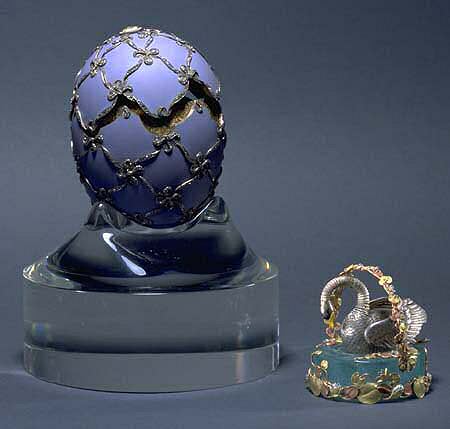








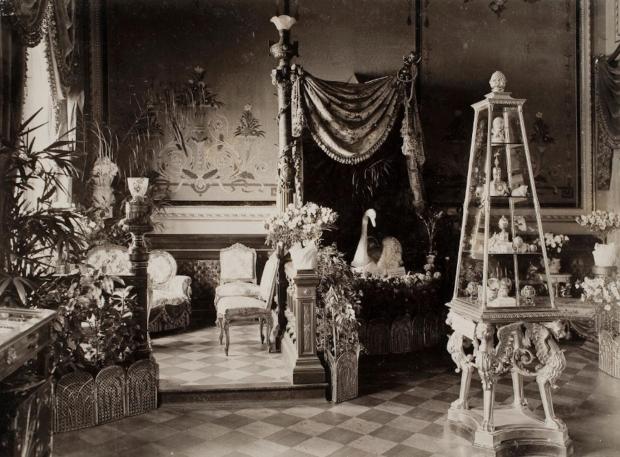



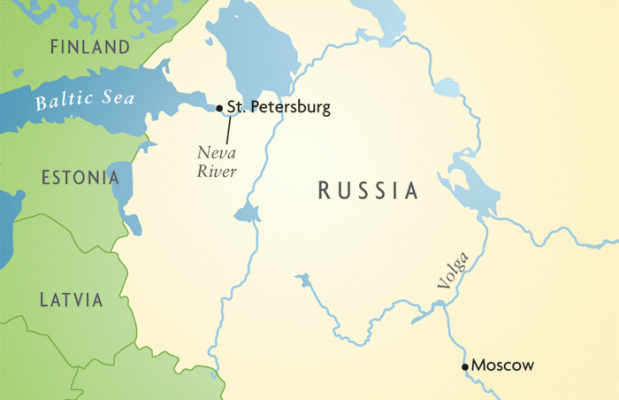


 A mechanism raises the surprise inside upon opening the egg. This time the surprise is a miniature replica of the
A mechanism raises the surprise inside upon opening the egg. This time the surprise is a miniature replica of the 

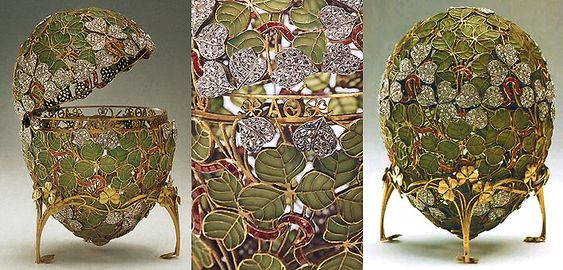

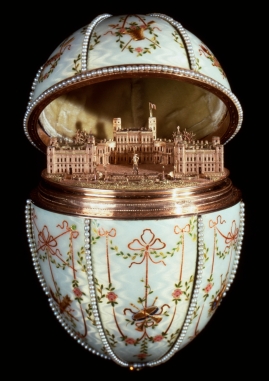

.jpg)
